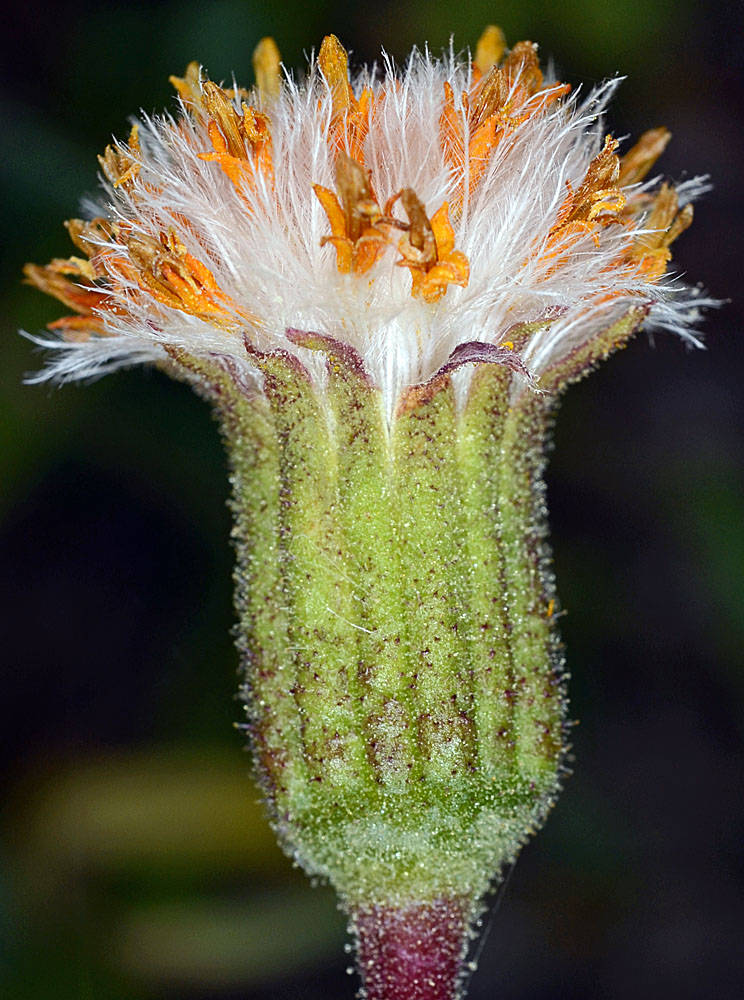
Plants 6–35 cm.
Leaves mostly 20–110 × 4–14 mm, green, surfaces conspicuously stipitate-glandular, sometimes sparsely scaberulose.
Florets 7–44; corollas 7.5–12 mm, yellow to yellow-orange.
2n=68, 70.
Dry to wet, often sandy sites, meadows, open conifer forest, semi-barren subalpine and alpine slopes and flats. Flowering Jul–Sep. 1500–2200 m. Casc. CA, NV. Native.
In Oregon, R. scaposa is very rare, known from a few closely spaced sites within the general range of R. argentea. In spite of overlapping ranges, the two species are not known to occur together, and each retains a relatively uniform set of distinguishing features. However, putative hybrids between R. argentea and R. scaposa have been noted in California, where populations of the two species are sometimes closely juxtaposed.
as described under Raillardella scaposa
Plants 6-53 cm. Leaf blades lanceolate or oblanceolate to linear, margins entire, faces stipitate-glandular, sometimes sparsely scabrellous as well. Ray florets 0 or 1-7; corollas yellow to yellow-orange, laminae 5-25+ mm. Disc florets 7-44; corollas yellow to yellow-orange, 7.5-12 mm. 2n = 68, 70.Flowering Jun-Sep. Wet to dry, often sandy sites; 2000-3500 m; Calif., Nev., Oreg.Variation among populations of Raillardella scaposa spans the morphologic and ecologic divide between R. argentea and R. pringlei; R. scaposa is evidently an allopolyploid that descended from ancestors closely related to each of the other two species. Raillardella scaposa is widely distributed in the Sierra Nevada and southern Cascade Range, often near populations of R. argentea. Putative hybrids between R. scaposa and R. argentea have been noted (e.g., R. Snow 293, UC, from Tuolumne County, California).